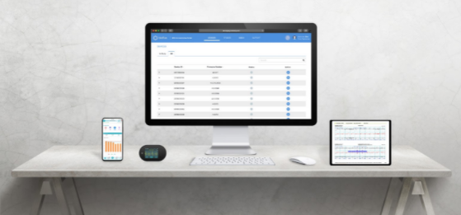Previously Published to News Break
When we think about “production,” we should also be thinking about the “product.” Depending on the market, production will be different, as will the requirements for the worker that we choose to work behind the scenes, making sure everything happens as it’s supposed to — with great quality and optimal fortitude. For the most part, the requirements of a production worker will always be the same. However, because we find ourselves working amongst a variety of niche markets, the actual specifications will vary quite a bit. They also vary, based on department, role, and area of expertise.
To better understand what we are looking for in a production worker, we must think about:
- Quality, Turnaround & Output
- Popularity & Product Demand
- Equipment & Technologies
- Budget & Inventory
- Health & Safety Management
- Shipping, Packaging & Warehousing
- Order Processing & Logistics
- Team & Project Management
While these are all concerns we have within the production environment, they can be carried out rather seamlessly with the help of a skilled workforce and solid leadership teams. Of course, nothing would be made possible without excellent communication and the ability to delineate.
Production workers should carry a toolbox of soft skills within their personality while focusing on the details of day-to-day operations. Of course, depending on the department they serve, they will need an adequate mix of technical skills, as well. Floaters, for example, will need to adopt skills from just about every area within the warehouse environment. While those in Shipping will need to adopt a stronger focus on logistics and order processing. Just the same, everyone will need to have some sort of experience in quality control and handling, regardless of department, role, or committee.
Project & Product Management
Orders must be processed on time, shipped out correctly, and delivered a little ahead of schedule. So, while communication rules supreme, teams must be able to collaborate across departments and coordinate orders with great efficiency.
Those working in shipping must stay on top of the going rates for freight and parcel deliveries, making sure products are shipped out, either according to the customer’s specifications or through whichever carrier can ensure a safe passage of goods in the quickest manner and at the best rate available. Time management, teamwork, and integrity are more important than you can imagine.
Management needs to stay on top of their teams, making sure everyone stays on task and is producing said good in adequate time. The ability to streamline processes, eliminate redundancies, and interface between all the other departments is almost necessary. Quality control will have a say before goods are sent to packaging and shipping for immediate delivery.
Automation
Innovation thrives in today’s production environment. It’s both a blessing and a curse to those who have decided to make a career out of it. The supply chain has become both automated and increasingly accurate with loss prevention mechanisms set into place. Auditing county and manual inspections are still a requirement with checks-and-balances keeping everyone honest.
The use of Microsoft Office, Warehouse Management Systems (WMS), and various other tools is becoming more and more essential to the workforce environment. Workers should be somewhat familiar with both the documentation and reporting of operations-related activities into the various systems for both archival and accessibility. Orders must be processed quickly and efficiently.
Safety Management & The Handling of Dangerous Goods & Wastes
Obviously, when we are talking about a warehouse, factory, or production-related environment, we’re also talking about potentially dangerous conditions. This may translate to falling, tripping, or having something knocked over on you. It may also mean large gears and cutting tools, processing devices, and compressors. Perhaps most dangerous of all, however, would be the handling of dangerous goods, disposal of hazardous materials, and the management of open flames.
Too much of a good thing can be a bad thing, so workers must be proficient at pouring, measuring, and discarding the excess. They must be able to read and interpret gauges, monitoring them so that no problems arise. They must be able to analyze and assess risks, safeguarding the organization against danger, liability, and possible damages along the way. Wearing protective gear is a must, so the production worker must be okay with this.
Preventative measures should be put into place. This means being able to regularly audit the work environment, keeping equipment maintained and repaired. They should be able to maintain compliance with regulations, corporate policies, and safe handling procedures.
Technical Abilities
In Manufacturing and Engineering-related roles, the worker must be able to read and interpret manuals, blueprints, wireframes, sketches, and CAD-based drawings. They should be able to business requirements into technical specifications while working according to the instructions given to them.
Factory workers must be skilled at operating the assembly line, placing products on the assembly line, and then delivering them to the right department. They must be able to check products for irregularities, damages, and potential loss, then reporting the details of said findings to the supervisor on duty.
Leadership must be able to operate within a high-stress environment, effectively manage processes, and show confidence in all that they do. They must be self-motivated and take ownership of the product lifecycle. They must know how to manage schedules, the workforce, budgets, and resources while training new hires on the floor. They must develop strategies to increase productivity, continuously improve performance, and remain flexible should anything go wrong.




